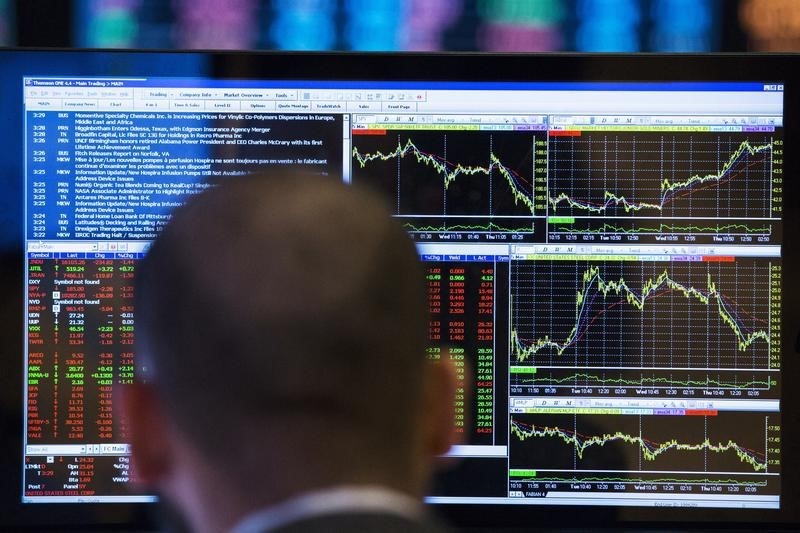This post was originally published on this site
https://i-invdn-com.akamaized.net/news/LYNXMPEA7D094_M.jpg
Investors who sell borrowed shares in anticipation of price declines are back in force. Bearish wagers climbed to about 7% of total stocks available for lending this month, up from 2020’s low of a little above 6% reached in August, data compiled by JPMorgan Chase (NYSE:JPM) & Co. show. That’s poised for the biggest increase since March.
The spike of short sales coincided with an equity rout that, at Monday’s worst point, took the S&P 500 to within points of entering a 10% correction. While contrarians may view the rise of skepticism as something healthy in a market that until now had defied any bad news — from plunging corporate profits to a lack of fiscal stimulus — JPMorgan strategists led by Nikolaos Panigirtzoglou warned it may mark the start of an ominous trend for equities.
“The recent rise in the short base at individual stock levels is a worrying development, especially for U.S. stocks where the short base still stands at rather low levels,” Panigirtzoglou wrote in a note to clients.
Selling abated Tuesday as the S&P 500 rose 0.2% as of 10 a.m. in New York, halting a four-day decline.
PagerDuty (NYSE:PD) Inc., nCino Inc. and Flowserve Corp (NYSE:FLS). are among Russell 1000 stocks whose short interest has surged this month as a percentage of their total shares available for trading, according to IHS Markit data compiled by Bloomberg.
To see how dangerous a continuing buildup can be, consider how fast bears took control earlier this year. According to JPMorgan’s data, the short interest ratio among individual stocks started the year at around 8% and then jumped above 9% as equities sank into their fastest bear market ever in March.
To be sure, all the shorted shares ended up helping contribute to the subsequent recovery through a process known as a short squeeze, when rising prices compel investors who made bearish bets to reverse their positions. But there’s no denying that the most-hated stocks fared worse during the March turmoil, with short selling compounding the market’s pain.
For now, short bets are growing from a relatively subdued base. Even with the latest increase, the current ratio still trails levels prior to the March meltdown. But that also means there’s a lot of room for short sales to expand should sentiment keep souring.
There is no shortage of reasons for pessimism. Stock valuations have reached the highest level since the dot-com era. Another round of fiscal stimulus is now seen unlikely by the end of 2020. And the U.S. presidential race is looming in November amid concerns that final results could be delayed for weeks.
“The market is going to be very fragile going into the election,” said Mike Mullaney, director of global markets research at Boston Partners. “If you want to bring your portfolio beta down without selling and going to cash, it makes some sense” to short some stocks, especially for short/long hedge funds, he added.
Skeptics had been mostly driven into extinction after the S&P 500 staged a 60% rally over five months. In August, the median S&P 500 stock had outstanding short interest equating to just 1.8% of market capitalization, the lowest level since at least 2004, data from Goldman Sachs Group Inc (NYSE:GS). showed.
Now that the rally has shown signs of faltering, short sellers are quick to ramp up wagers. To Arthur Hogan, chief market strategist at National Securities Corp., that bodes well for the market because every bear today is tomorrow’s potential buyer.
“The tricky part about that is, when that trade starts, it tends to build up a pent-up demand for equities,” Hogan said. “The larger the short position, the more likely there will be a floor of demand.”
©2020 Bloomberg L.P.

